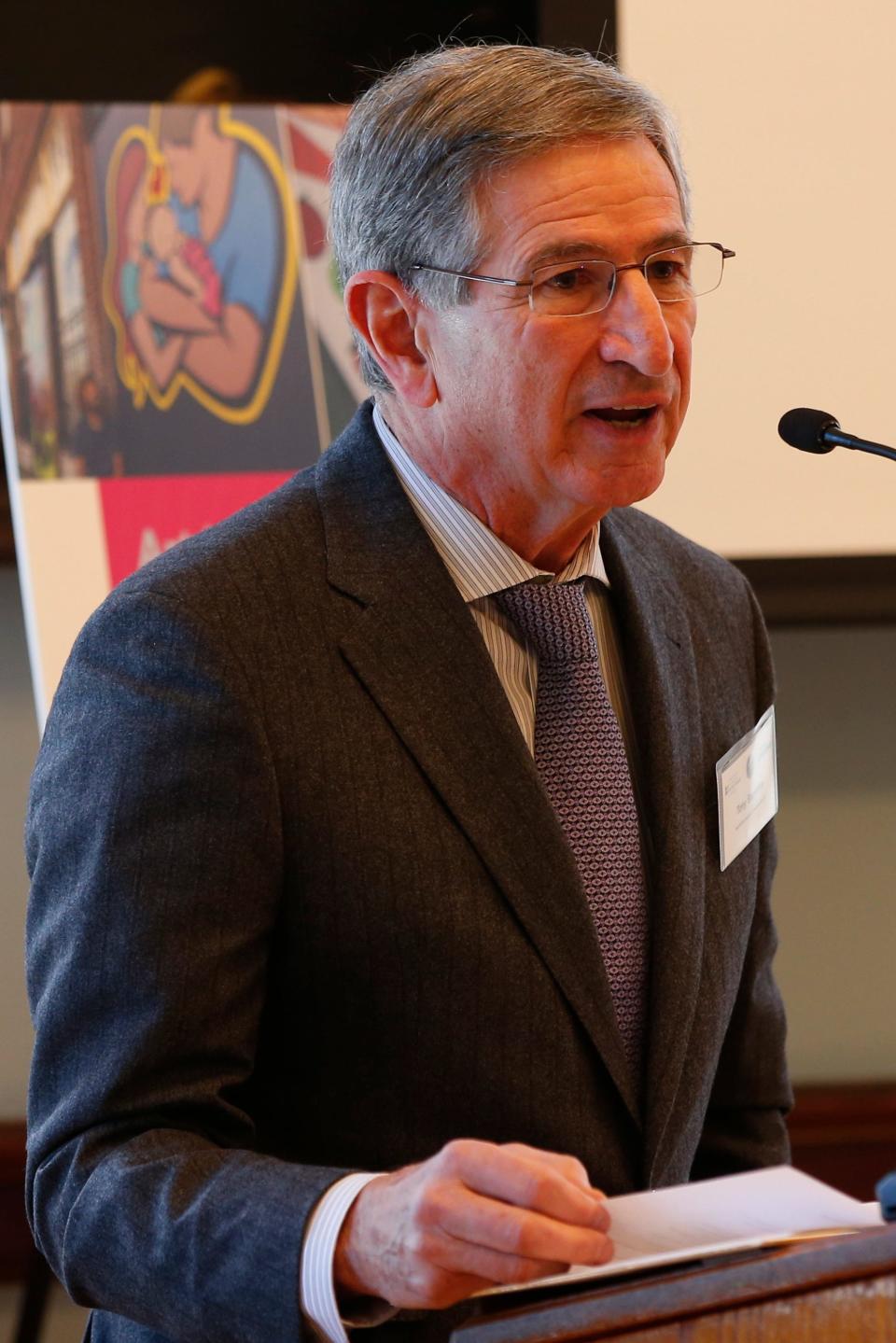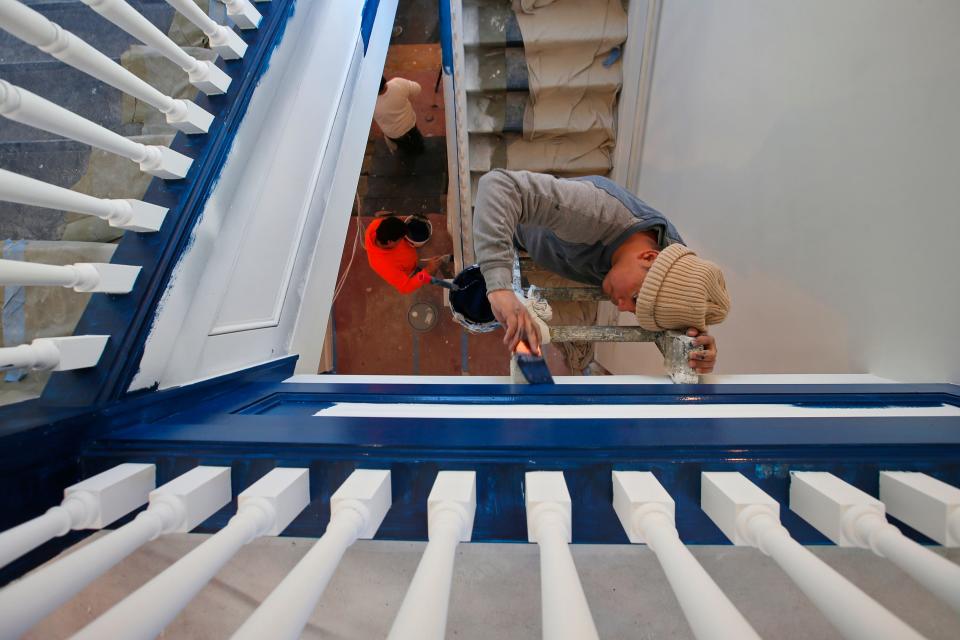There's a regional housing shortage in the SouthCoast. Here's a closer look at why.
Community leaders from across a wide cross-section of interests that represent the private, nonprofit and higher education sectors of the economy have been working together to focus on ways to address the regional housing shortage in the New Bedford area.
The Regeneration Project Committee of the New Bedford Economic Development Council (NBEDC) has released its latest report addressing crucial issues and potential solutions for housing in the city and the broader region.

NBEDC Board of Directors President Anthony Sapienza said in an interview that there are a few key takeaways from their investigation, including all the data that supplements the data in New Bedford’s housing plan “Building New Bedford” drafted under the direction of Mayor Jon Mitchell released last March.
The report, "Housing for All: Forward-Looking Strategies for a Growing New Bedford,” recommends a series of immediate- and near-term action items in concert with the housing plan.
“We felt it was important to create even more data so that we really understand the housing problem in New Bedford, but more importantly how it fits into a regional, statewide and quite frankly, a national problem with rising rents and not enough available housing for its working-class population,” he said.
He said it’s important to support the city government, but the business community, developers, lenders and other participants in the Regeneration Project all need to step up to address the issue and address it on a regional basis.

Rental properties in short supply in the suburbs
Sapienza said it’s clear from the numbers that there are not enough rental properties available in the suburban towns that would be attractive to live in, and they encourage the whole region to get involved in building more affordable rental housing tailored to needs of the communities.
One of the recommendations is for the city to have an interagency working group that works with the permitting and planning departments to help speed up the process of redevelopment when there are opportunities to expand the supply or public housing.
He said it has been very difficult the last two years due to rising interest rates and construction costs, so it’s important that they work with the lending community to expand the supply of public housing, but not more multi-family units or duplex townhomes.
“We could do more with smaller condominium properties with 2-to-4-to-6 units in a building,” he said. “That would be more affordable. The governor’s housing proposals provide many incentives for that kind of construction, and we as a community should take full advantage, as should the adjacent communities next to us.”
He said it’s an opportunity to create awareness of the options for additional funding for housing.
“We really want to build on what the mayor and his Department of Housing and Community Development Department has started with the plan that was announced back in March, and build on it,” Sapienza said.
He said the state’s new Housing Secretary, Ed Augustus, has agreed to participate in a half-day symposium and panel discussion for all the players in New Bedford and neighboring communities to talk about what they can do together. It will be held April 30 at the New Bedford Whaling Museum.
The Regeneration Project report on the NBEDC website states that developing a detailed implementation plan with clear project milestones and resource commitments and hosting a regional housing summit are two of the immediate action items that have been proposed.
As for near-term action items, they fall into four core areas including land assembly, home ownership, gap financing and capacity building working in concert with the Building New Bedford strategy that will help the city respond with the force necessary to bring the housing market into balance, as stated in the detailed report.
“The administration appreciates the group’s initiative to offer input about the city’s housing plan,” city spokesperson Jonathan Darling said. “We will assess the report’s recommendations to determine whether the city’s efforts can be refined so as to facilitate more housing construction.”
Understanding local housing challenges
Conducted by the Massachusetts Institute for a New Commonwealth (MassINC), the comprehensive data study, “Housing for All” delves into New Bedford's housing landscape, offering insights that are critical to fully understanding local housing challenges, according to the press release.
Notably, the report identifies the need for the construction of 8,700 housing units by the year 2030 in Greater New Bedford to stabilize prices, with approximately 5,500 units recommended within the city itself.
Between 2010 and 2020, the number of households in New Bedford grew by 7.8 percent, but the city’s housing stock increased by just 3.8 percent. This means 3,000 new households are currently vying for less than 1,600 new housing units.
A key finding reveals that there are nearly 9,500 households with earnings below 30 percent of the area median income, yet fewer than 6,500 affordable rental units in Greater New Bedford.
The study also identifies unmet needs at all income levels, including a prominent gap for unrestricted units for middle and higher-income households.
The goal of the report is to comprehensively understand New Bedford's housing environment, pinpointing opportunities for enhancement and growth, ultimately contributing to a vision of “Housing for All.”
Why the Regeneration Project took this on
Initiated in early 2023, the Regeneration Project decided to undertake this unprecedented analysis due to its unique position in being able to address complex city-building challenges, according to the release.
With 42 community leaders from diverse sectors, the Regeneration Project includes top executives from regionally headquartered firms including CEOs of multinational corporations, regional banks, leaders of educational institutions, owners of small and medium-sized enterprises, artists and entrepreneurs.
The project is staffed by the NBEDC team for its day-to-day activities and utilizes the work of other partner entities for the development of white papers and comprehensive reports.
Joshua Amaral, director of the New Bedford Office of Housing and Community Development, said the report’s findings validate the work their team has done implementing the Building New Bedford housing plan by providing useful data and thoughtful recommendations.
“We enthusiastically welcome community and business leaders throughout the region to join in solving one of our most pressing challenges,” he said. “Collectively with our surrounding towns, we have the opportunity to model a regional approach that embraces sensible development producing attainable housing for all.”
The partnership with MassINC
Partnering with MassINC, a non-partisan organization dedicated to providing impartial information and promoting democratic participation, the Regeneration Project Committee gained valuable insights useful for New Bedford's future growth, according to the release.
MassINC Research Director Ben Forman led the project, highlighting the significance of the housing study in shaping the city's future. He previously served in the New Bedford’s planning department and helped form the Regeneration Project Committee.
Before joining MassINC in 2008, Forman worked as a research assistant at the Brookings Institution Metropolitan Policy Program in Washington, D.C. and was awarded a Rappaport Public Policy Fellowship.
The benefit of financial support
Financial support from Bristol County Savings Bank, BayCoast Bank, Bank Five, St. Anne’s Credit Union and the Realtor Association of Southeastern Massachusetts made the in-depth analysis possible.
As Bristol County Savings Bank President and CEO Patrick Murray said, “Lending institutions such as community and commercial banks are eager to formulate best practices when it comes to housing in our city and region.”
Nicholas Christ, president, and CEO of BayCoast Bank, said this effort will “not only support the continued development of New Bedford's housing environment and improve the quality of life for its residents but serve as a model for other municipalities.”
Standard-Times staff writer Kathryn Gallerani can be reached at kgallerani@gannett.com. Follow her on Twitter: @kgallreporter. Support local journalism by purchasing a digital or print subscription to The Standard-Times today.
This article originally appeared on Standard-Times: Housing issues in Greater New Bedford come into focus

